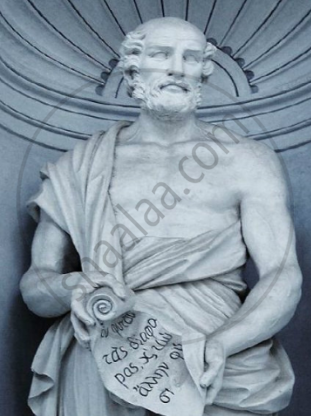Topics
Historiography : Development in the West
History : Applied History
Working of the Constitution
Historiography : Indian Tradition
The Electoral Process
Political Science : Working of the Indian Constitution
Applied History
Political Parties
History of Indian Arts
- What is ‘Art’?
- Indian Traditions of Visual Arts (Drik Kala): Painting
- Prehistoric Paintings
- Mural Paintings and Cave Painting
- Folk Styles of Paintings
- Classical Styles of Painting
- Miniature Paintings in Manuscripts
- Modern Indian Paintings
- Indian Traditions of Visual Arts (Drik Kala): Sculpture Art
- Indus Civilization Sculpture
- Folk Styles of Sculptural Art
- Classical Styles of Sculptural Art
- Indian Iconography
- Indian Traditions of Visual Arts (Drik Kala): Architecture and Sculpture
- Rock-cut Architecture
- Temple Architecture
- Indo-Islamic Architecture
- Indo-Gothic architecture
- Indian Traditions of Performing Arts
- Indian Theatre
- Indian Music
- Indian Dance
- Present Scenario of the Performing Arts
- Art, Applied Art, and Professional Opportunities
Social and Political Movements
- Movement
- Important Movements in India
- Tribal Movement
- Farmers Movement
- Worker's Movements
- Women’s Movement
- Environment Movements
- Consumer Movement
Mass Media and History
Challenges Faced by Indian Democracy
Entertainment and History
Sports and History
Tourism and History
Heritage Management
History - Imperialism
History - 20th Century Age of conflict
History - Emancipation of Asia and Africa
History - World after World War 2
Political Science
Geographical discoveries and colonization
- Concept for Geographical Discoveries and Colonization
Africa
- Imperialism - Africa
Asia: India, China, Japan
- Concept for Asia: India, China, Japan
Dictatorships in Europe, Second World War and world
- Concept on Dictatorships in Europe
- Concept for Second World War and World
First world war
- Concept on First World War
The League of Nations
- Concept for the League of Nations
Russian Revolution
- Concept for Russian Revolution
United Nations Organization
- Concept for United Nations Organization
Africa
- Emancipation of Africa
Asia
- Emancipation of Asia
Globalization
- Globalization After World War II
Scientific and Technological Progress
- Scientific and Technological Progress After World War II
Cold war
- Formation of the Cold War
Social Diversity and Democracy
- Social Diversity
- Coccept for Caste/Race and Democracy
- Concept for Language and Democracy
- Cocnept for Religion and Democracy
- Concept for Gender and Democracy
- Concept for Democracy and Diversity
Challenges to Democracy Remedial Measures to the Challenges
- Concept for Challenges to Democracy Remedial Measures to the Challenges
Internal work
Democracy
- Democracy - Meaning, Types and Characteristics
Political Parties and Types
- Political Parties
- Importance of Political Parties
- Major National and Regional Parties in India/ Types of Political Parties
Notes
Tradition of Indian Historiography
- Indian history has a rich literary tradition.
- In India, history was written long ago, and a significant legacy endures now.
- The tradition of history writing in India, also known as Indian historiography, is divided into three periods: ancient, medieval, and modern Indian historiography.

- India is one of the oldest civilizations and countries across the globe, with at least 4000 years of history known through developed and oral documents.

"History is not the past . . . History is the distillation of evidence surviving from the past. Where there is no evidence there is no history." - Oscar Handlin, Truth in History
- A country cannot survive for very long without its own history. Because we couldn't learn about a country's past without a written or oral history, every nation used to have one.
- The historiography of India refers to the studies, sources, critical methods, and interpretations used by scholars to develop a history of India.
- The first foreign ambassador to India, Megasthenes, wrote down his ethnographic observations in a book called "INDIKA". He is known as the Father of Ancient Indian History because of his pioneering efforts.
Text
Megasthenes:
|
Megasthenes |
- Megasthenes is considered the father of Indian history due to his pioneering work recording various ethnographic observations in India. 'INDIKA' has been compiled by him. The word 'INDIKA' in ancient Greek means various things related to India.
- Around 302 BCE and 288 BCE, Megasthenes came to India. He was sent by Seleucus Nicator to serve as the first foreign ambassador to India.
- He was sent to the Mauryan emperor Chandragupta by the Hellenistic king. At that time, he lived in the state of Patliputra and wrote about then- India.
- Political arrangements and unification done by the Indian ruler were described in his book.
- The people, climate, land, and soil fertility were noted by him.
- Somehow his original work was lost. However, he is mentioned in pieces in Latin and Greek words in the contemporary world.
If you would like to contribute notes or other learning material, please submit them using the button below.

